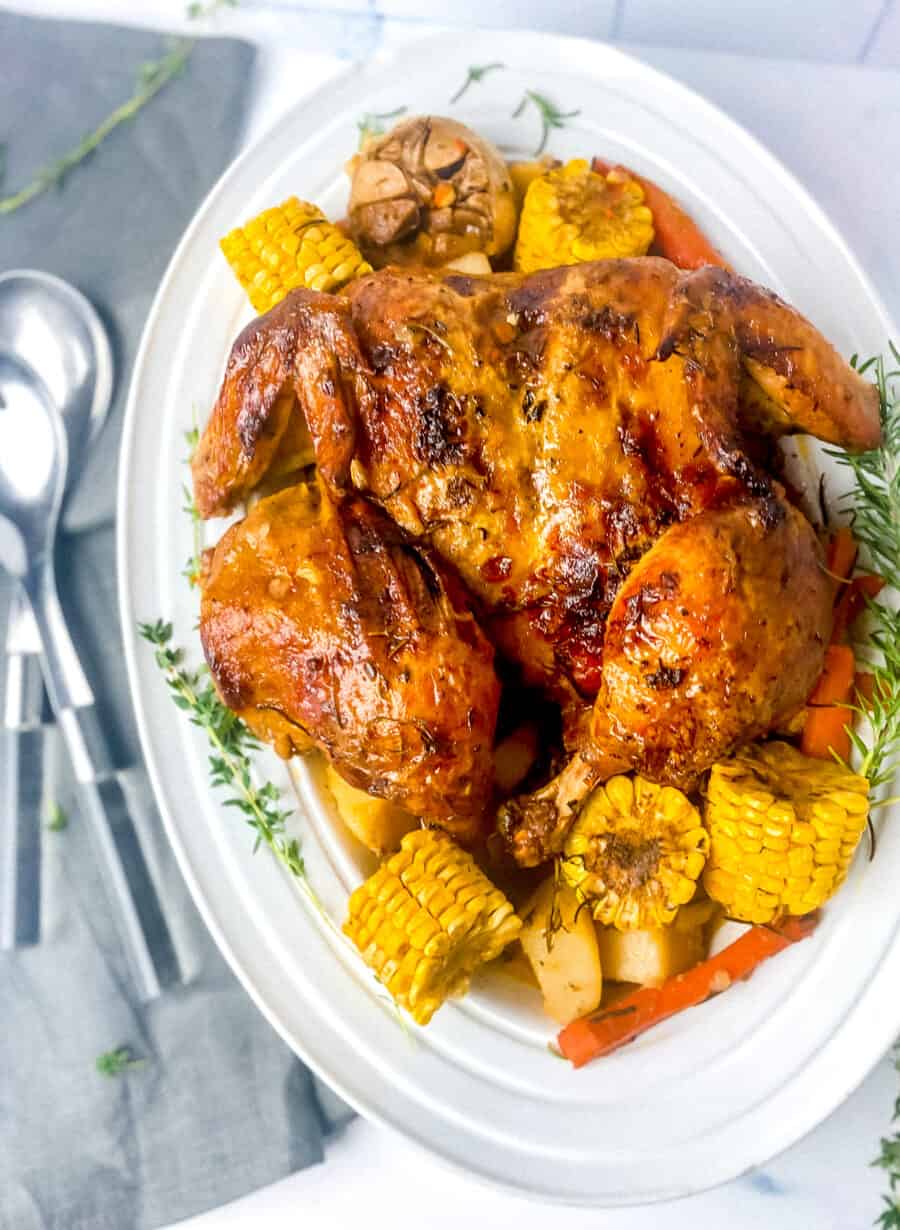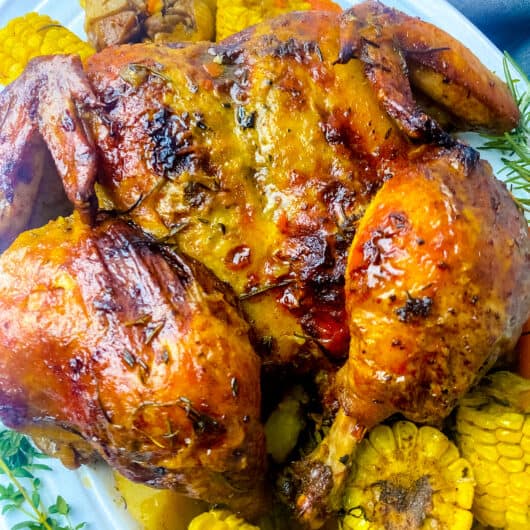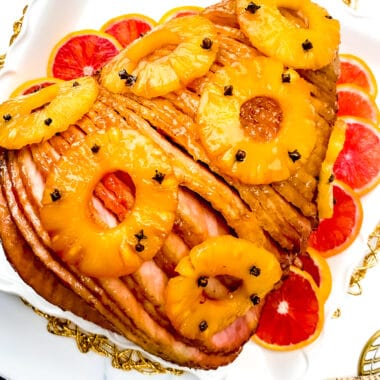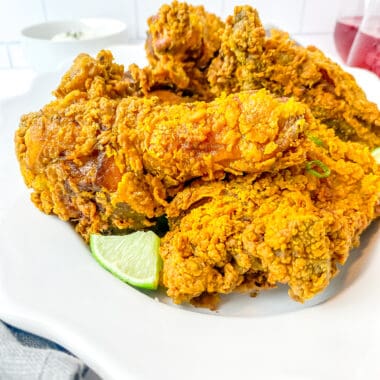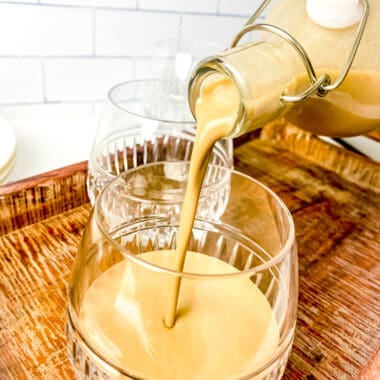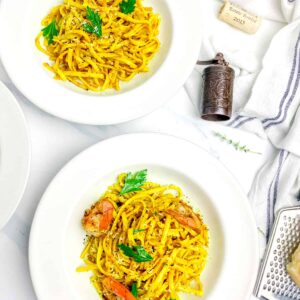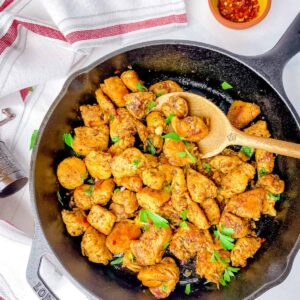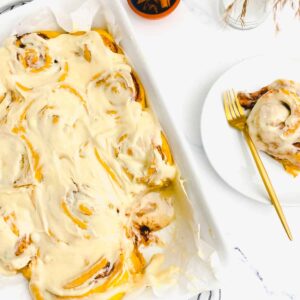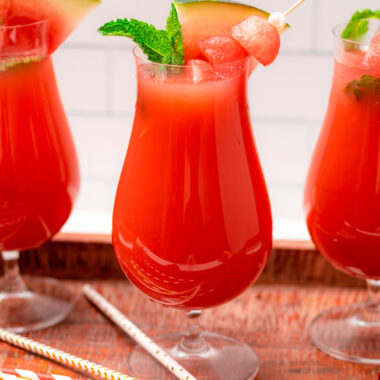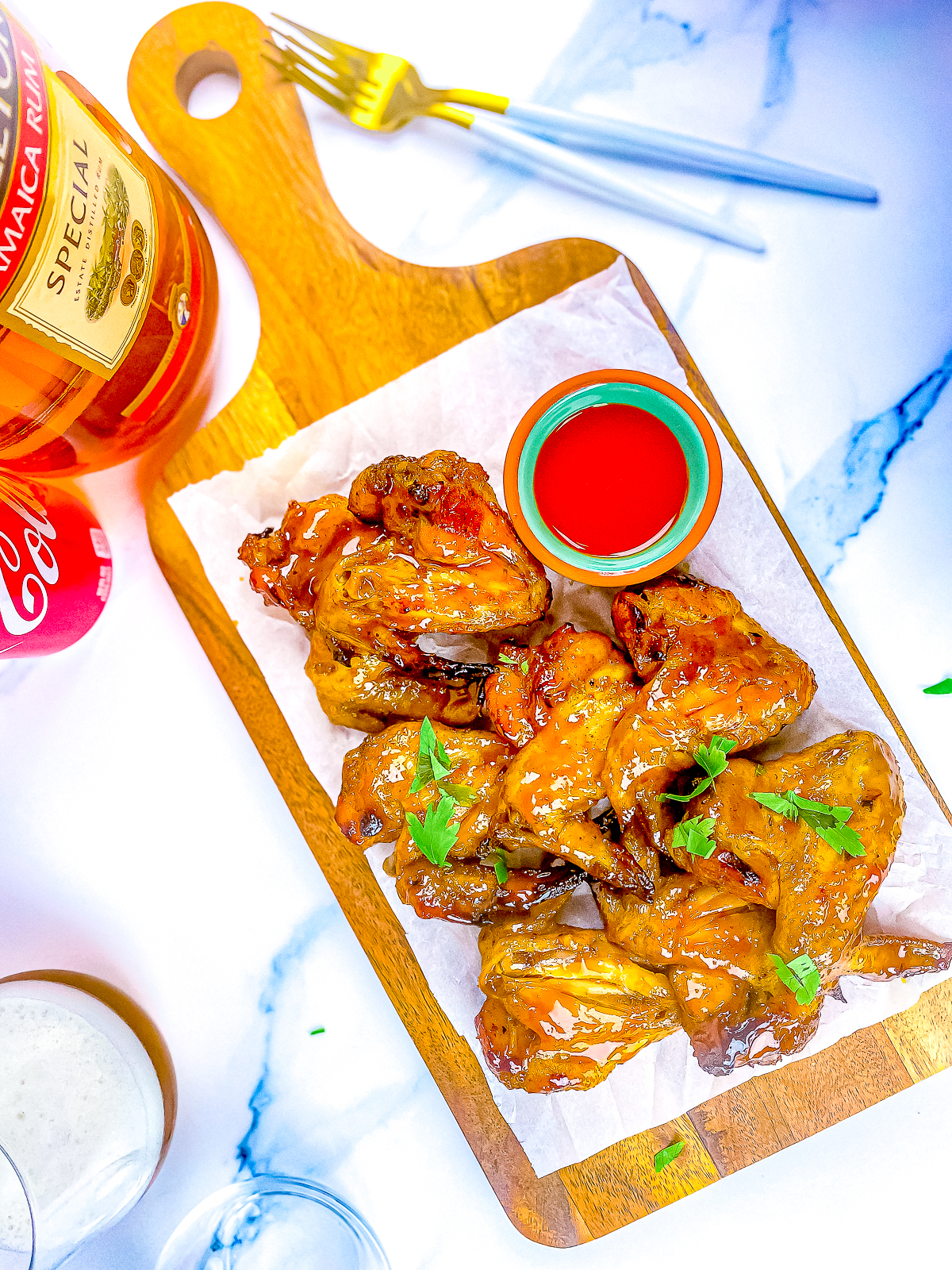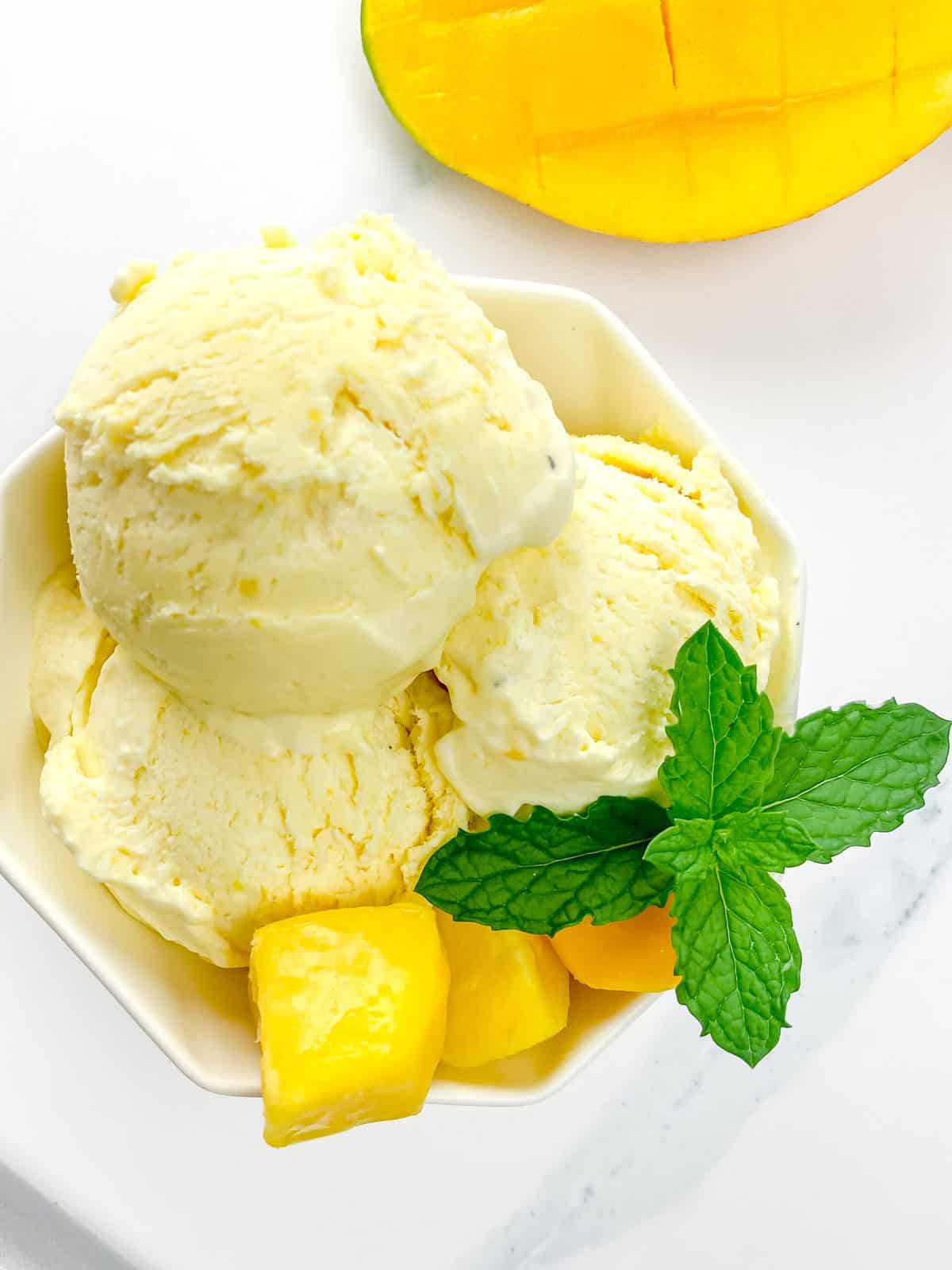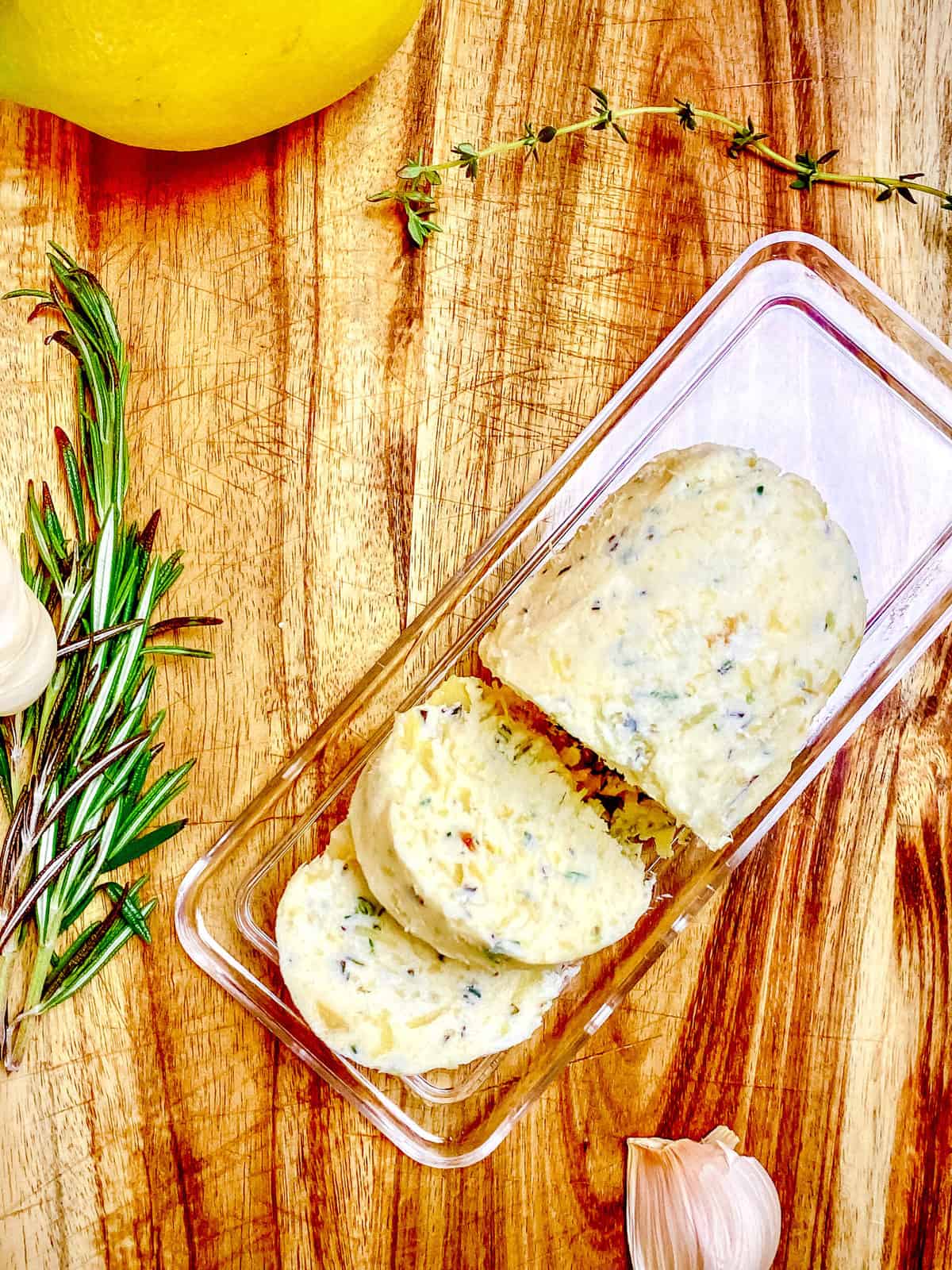This garlic-herb roasted chicken is infused with my homemade garlic and herbs infused butter is juicy, delicious, and so easy to make.
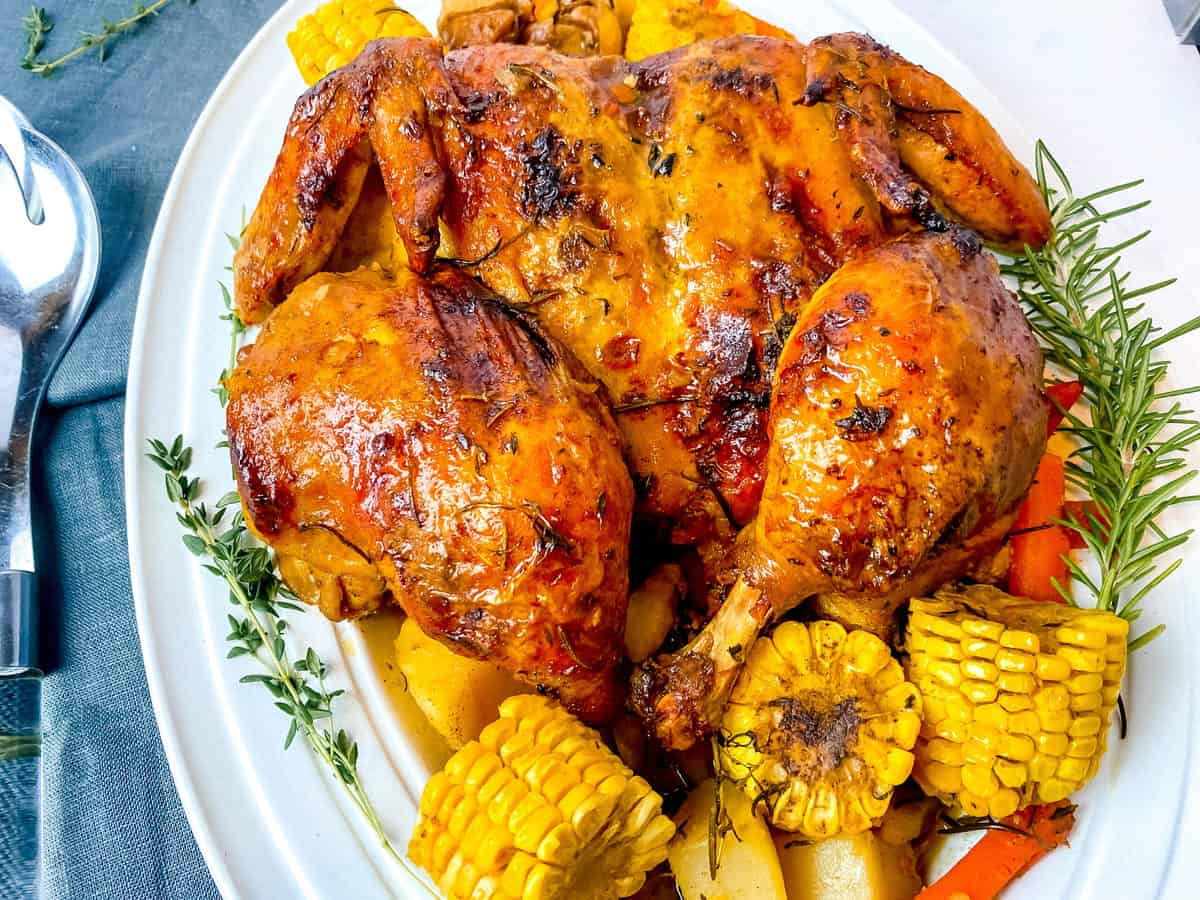
This simple (but not basic) garlic-herb roasted chicken is infused with white wine and my homemade garlic herb butter is one of my fave roast chicken recipes.
It roasts up perfect every time – juicy with crispy skin and loads of pan juices that you can enjoy as is or you can turn into a delicious gravy. Andddddd the veggies, especially the fresh corn will be sopped up that delicious pan juice and hunnnay——It’s everythang!!!!
More garlic forward recipes for you to enjoy:
Ultra Creamy Garlic Parmesan Mac And Cheese
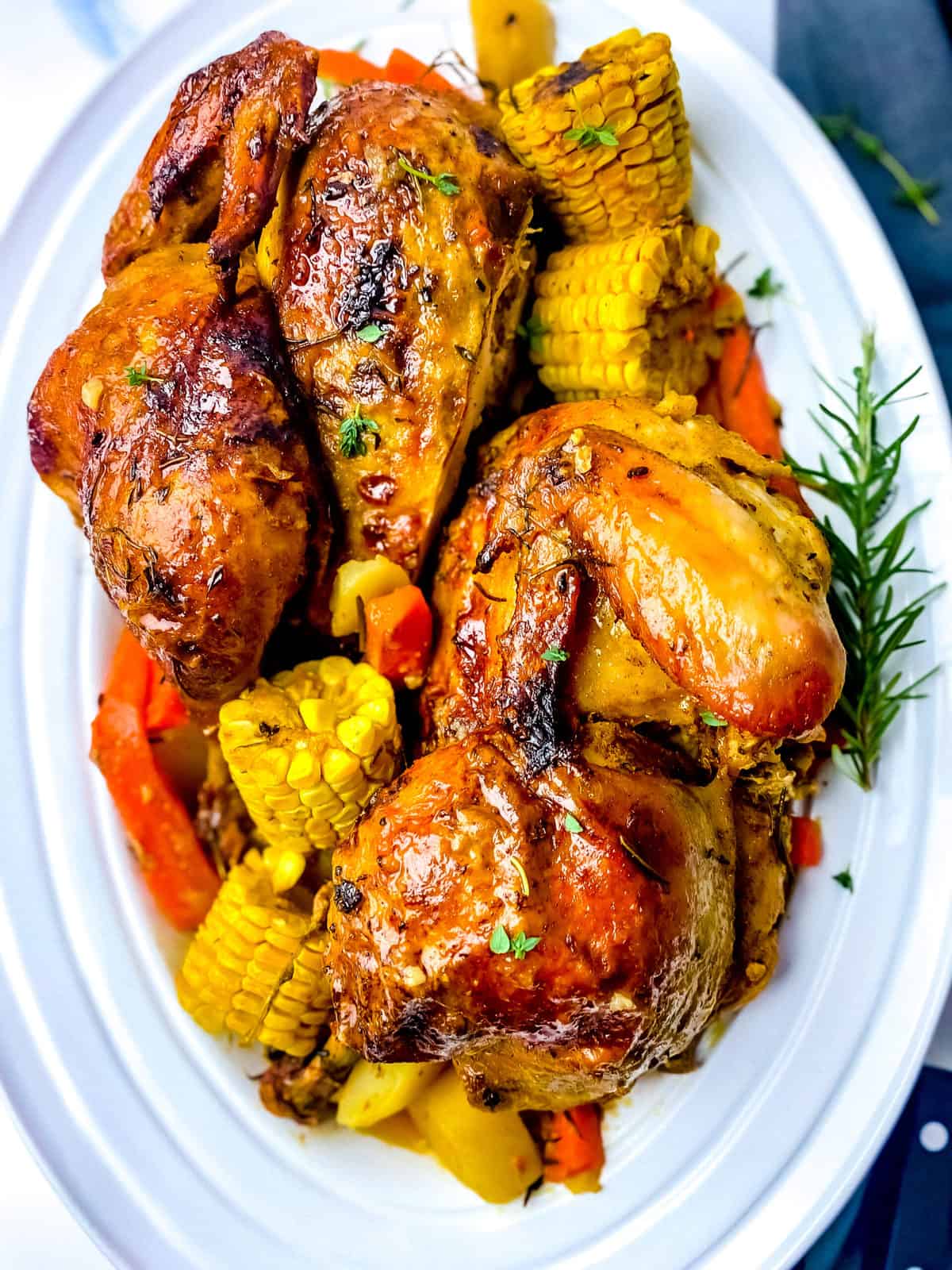
It’s truly worth the effort.
It’s worthy of your Mother’s day dinner table, Sundays, or holiday dinner table. It comes together in a single roasting pan to bring out the most delicious flavors.
The vegetables make a perfect side dish–and the leftovers are awesome, too!
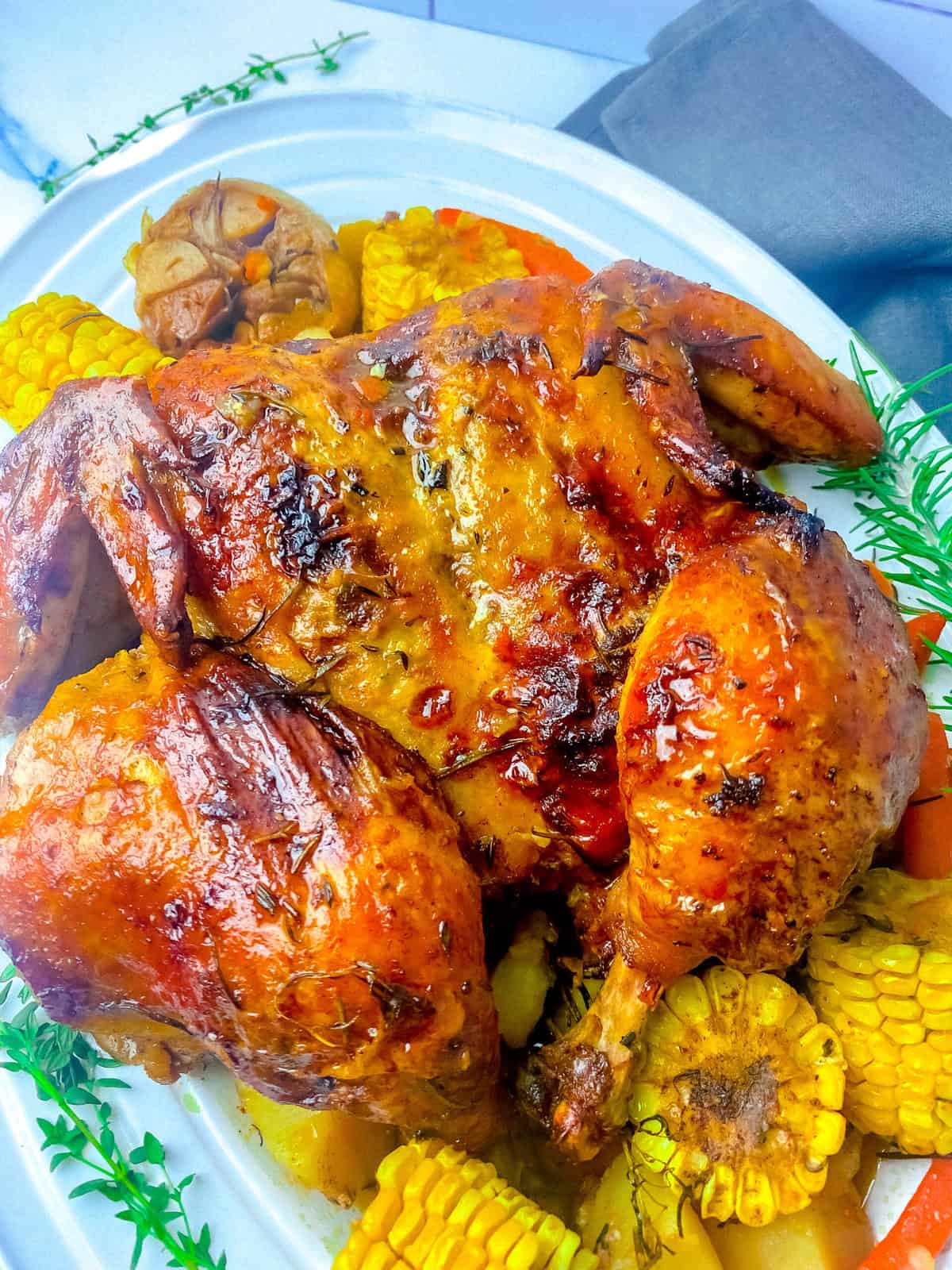
What Type Of Chicken is Best For Roasting?
Broilers, roasters, and cornish hens are all excellent for roasting. Depending on the recipe, you can choose whole chickens, wings, breasts, thighs, drumsticks, legs, quarters, halves, or ground chicken.
Choose plump, well-shaped chicken with smooth skin, firm flesh and a fresh smell.
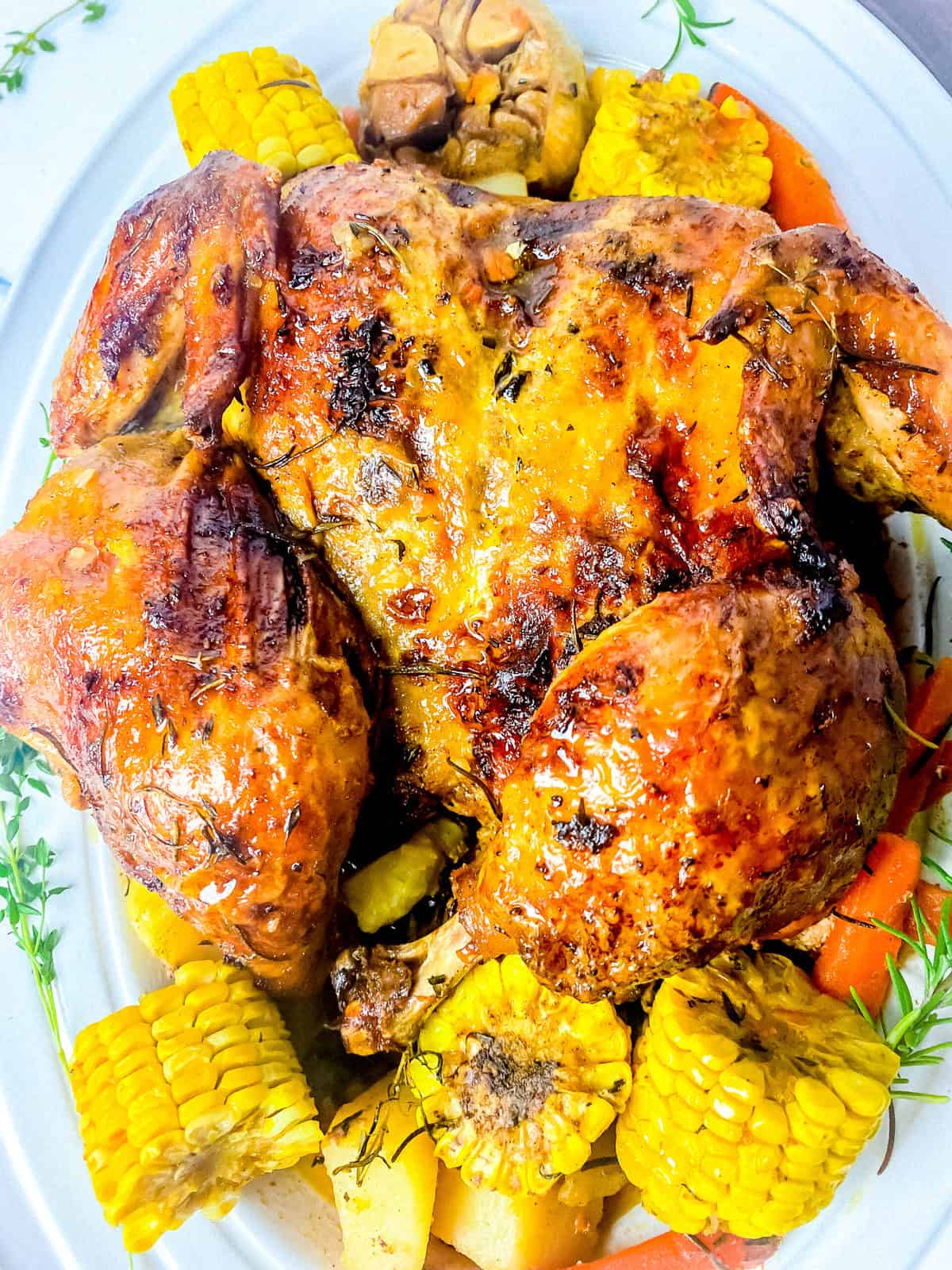
What Is The Difference Between Baked And Roasted Chicken?
The main differences between roasting and baking are the types of foods you roast vs bake and the temperature of the oven. When it comes to temperature, roasting requires a higher oven temperature of above 400°F for the cooking process, while baking takes place at lower oven temperatures around 375°F and below.
What is Roasting?
Roasting is a cooking method that uses dry heat and hot air to surround the food and cook it evenly on all sides.
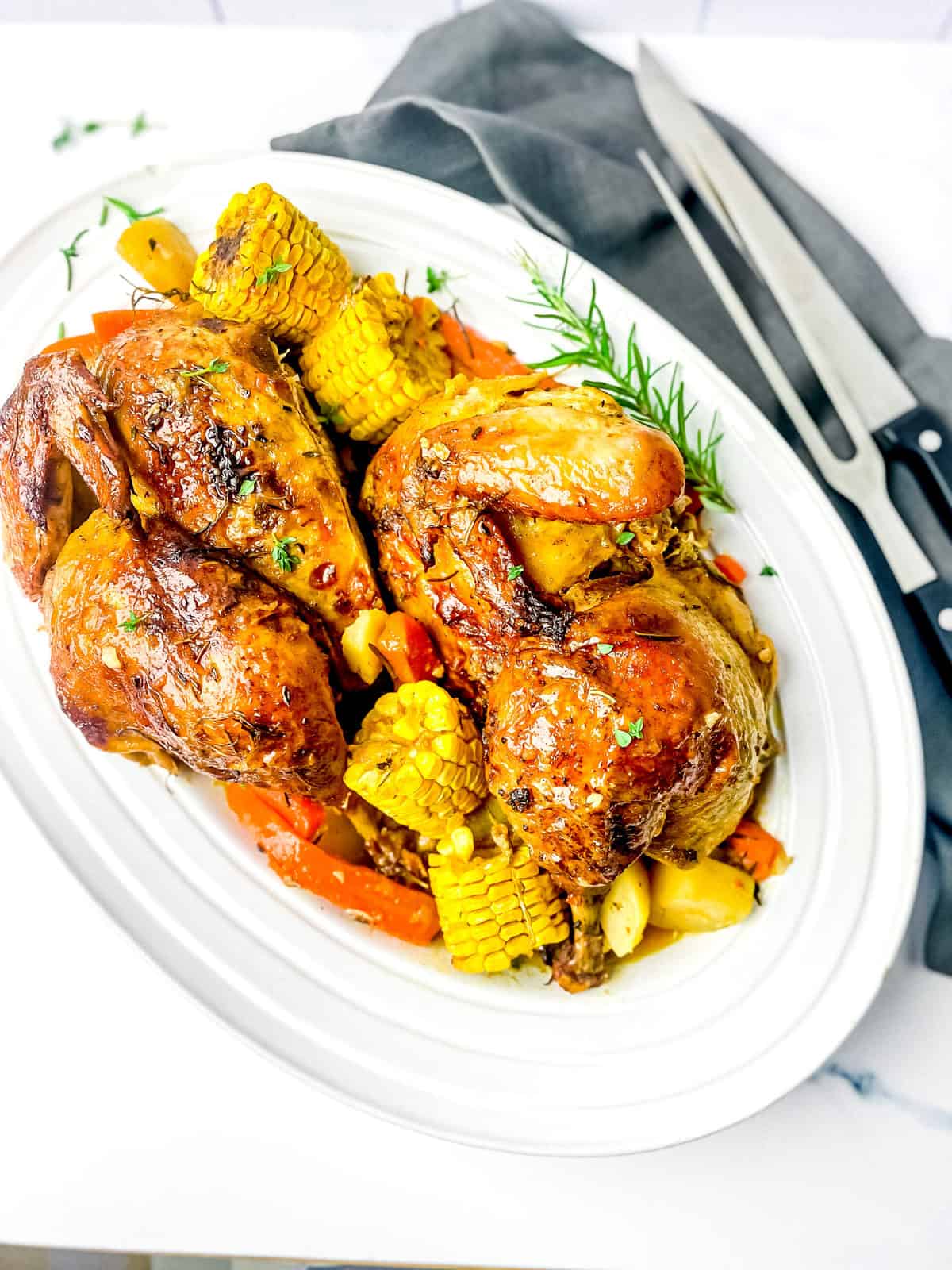
What is Baking?
Baking is cooking with dry heat without direct exposure to a flame.
When making foods that have a solid structure (vegetables or meats), you should roast the food. If you’re making foods that aren’t solid before cooking (cake, bread, etc), you should bake the food. #RuleOfThumb

What’s The Secret To The Juiciest Roast Chicken?
Here are a few tips I think will help you to roast up the juiciest roast chicken every time:
- Season the chicken generously. Season the chicken inside and out. Add seasoning and fresh herbs in the cavity and well as under the chicken skin not just on the skin.
- Marinate the chicken. The longer the bird sits in the marinade the more flavorful it will be. Overnight is best.
- Leave the skin on. The skin protects the chicken from drying out. Besides, who doesn’t like crispy chicken skin on their roast skin.
- Spatchcock the chicken. This allows the chicken to lie flat when roasting for even roasting on all sides. The breast and thighs are done at the same time. This also allows the chicken to cook up to 25% faster. If you choose to roast the chicken without spatchcocking, truss the chicken. I should point out – not trussing your chicken isn’t going to ruin your chicken. But tying up your bird with a bit of twine will keep it more compact and prevent the breast meat from drying out before the thighs and legs are cooked. I’ll confess, I rarely truss my chicken. I like the crispy ends on the wings. I guess that’s the Jamaican in me. Do what works for you.
- Temper the bird. Don’t place the cold chicken in the oven. Allow it to sit on the counter and come down to room temperature (or at the very least get the chill off) prior to roasting. This is key to producing an evenly cooked chicken and this is also a safe process (just in case you were wondering).
- Calibrate your oven. This will ensure you’re getting an accurate reading on the temperature. Every oven is different so grab the manual for the most accurate way how to calibrate it.
- Preheat the oven. Allow the oven to come up to temperature prior to placing the chicken in the oven. Meats, roasts, and poultry can’t brown in a cold oven. And there’s nothing worse than having one part of your dish overcooked and rubbery and another part not cooked at all.
- Use a roasting pan, oven-proof skillet, or cast-iron skillet.
- Roast the whole chicken uncovered or covered. Personally, I prefer to roast my birds covered and increase the temperature when it’s close to finishing crisping up the skin. The choice is yours. If you choose to roast it uncovered, you can tent it with foil if it’s browning too quickly.
- Oven temperature. Technically you can roast your chicken at any temperature. 420-430 degrees Fahrenheit is my sweet spot. Timing and results will vary. Go low and slow for a very tender, falling-off-the-bone flesh and softer skin (around, 300 to 350 degrees for 1 ½ to 2 hours or so). Or roast it fast and furiously for less time for crisp, dark brown skin and firmer, chewier flesh (between 375 and 500 degrees for 45 minutes to 1 1/2 hours).
- Remove the chicken from the oven once the internal temperature reaches between 155°F to 160°F and then allow the chicken to sit and continue to cook until it reaches a final internal temperature of 165°F. Use a thermometer to check the temperature.
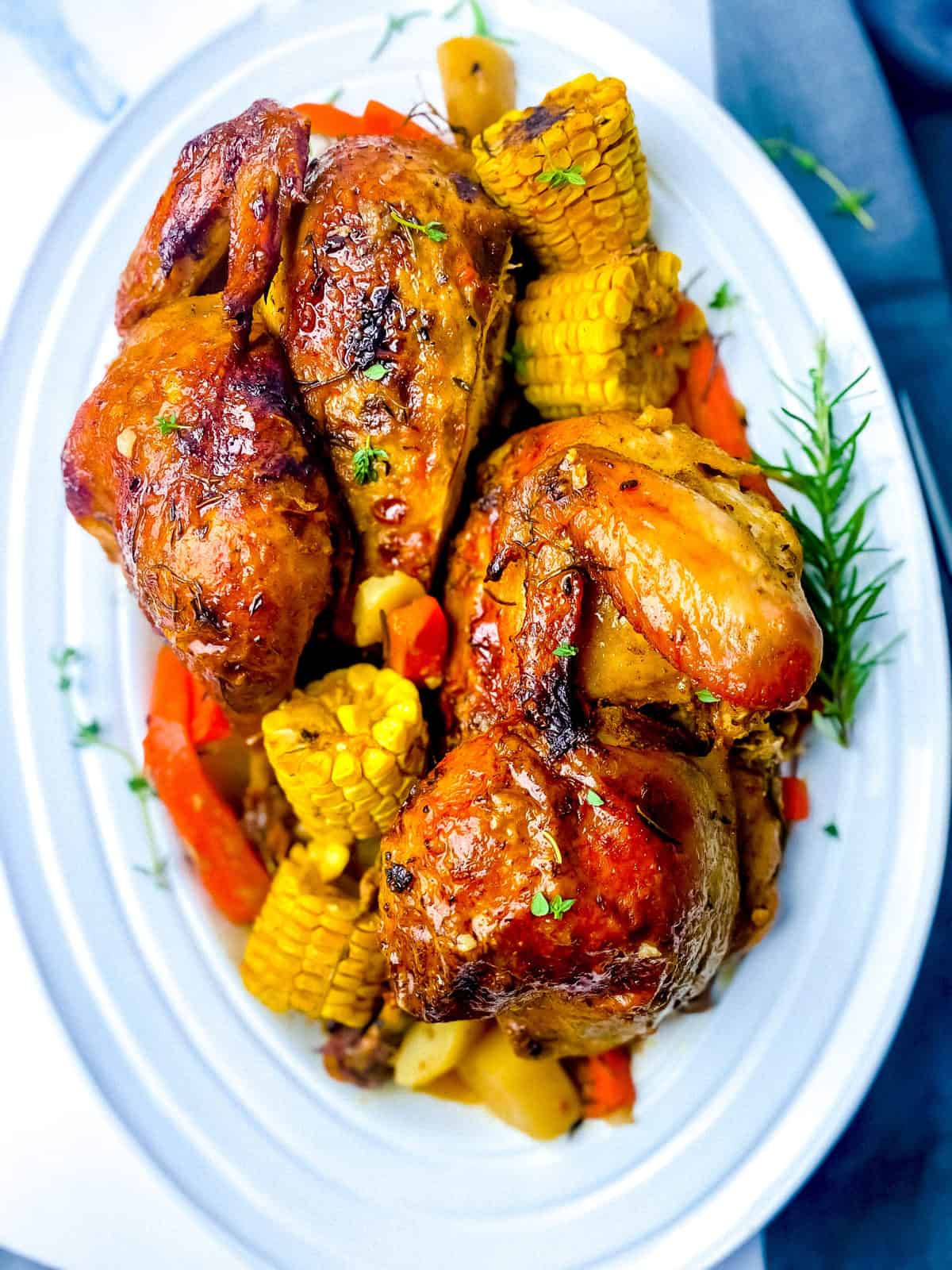
Ingredients Rundown
Ingredients To Make Garlic Herb Roasted Chicken.
Whole chicken – You can use a roaster, broiler or cornish hensOlive oil – or your choice of vegetable oil
Dry white wine – Dry white wines are excellent for cooking lighter dishes such as poultry, pork, seafood, and vegetables. Sauvignon Blanc, Pinot Grigio, Chardonnay are usually my go-to. Choose a wine you enjoy drinking – Just don’t use the wines labeled as “cooking wines”.
Seasonings – All-purpose seasoning, Smoked paprika – regular paprika works too, Garlic powder, Onion powder, Salt, Black pepper
Dry bay leaves
Fresh rosemary and thyme – I recommend using fresh herbs as they are more flavorful than dried herbs. But of course, also use dried herbs if that’s what you have on hand. The herbs ratio is flexible and can be customized to your taste or what you have on hand.
Vegetables – Fresh Corn on the cob, Frozen if you must, Russet potato, Carrots, Garlic Heads – You can use 20-24 peeled individual garlic cloves as well.
*** The full recipe, including all ingredients, measurements, instructions, and recipe video 🎥 is located in the recipe card below.
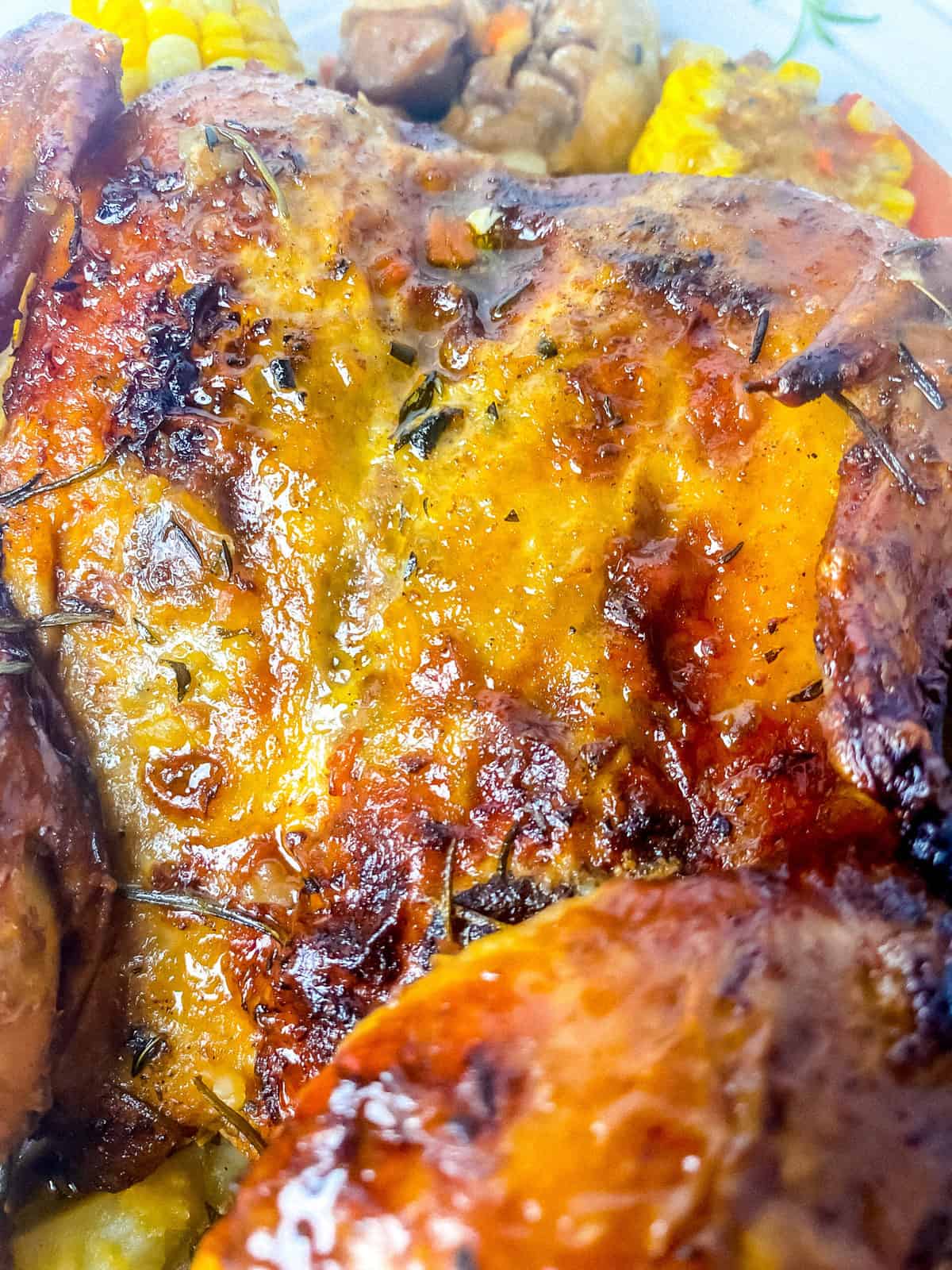
Recipe FAQs
Substitutions
What Herbs To Use On Roast Chicken?
For this recipe, I used fresh thyme and rosemary. You are not limited to using only these two. Use your favorite herbs to make this an unforgettable dinner.
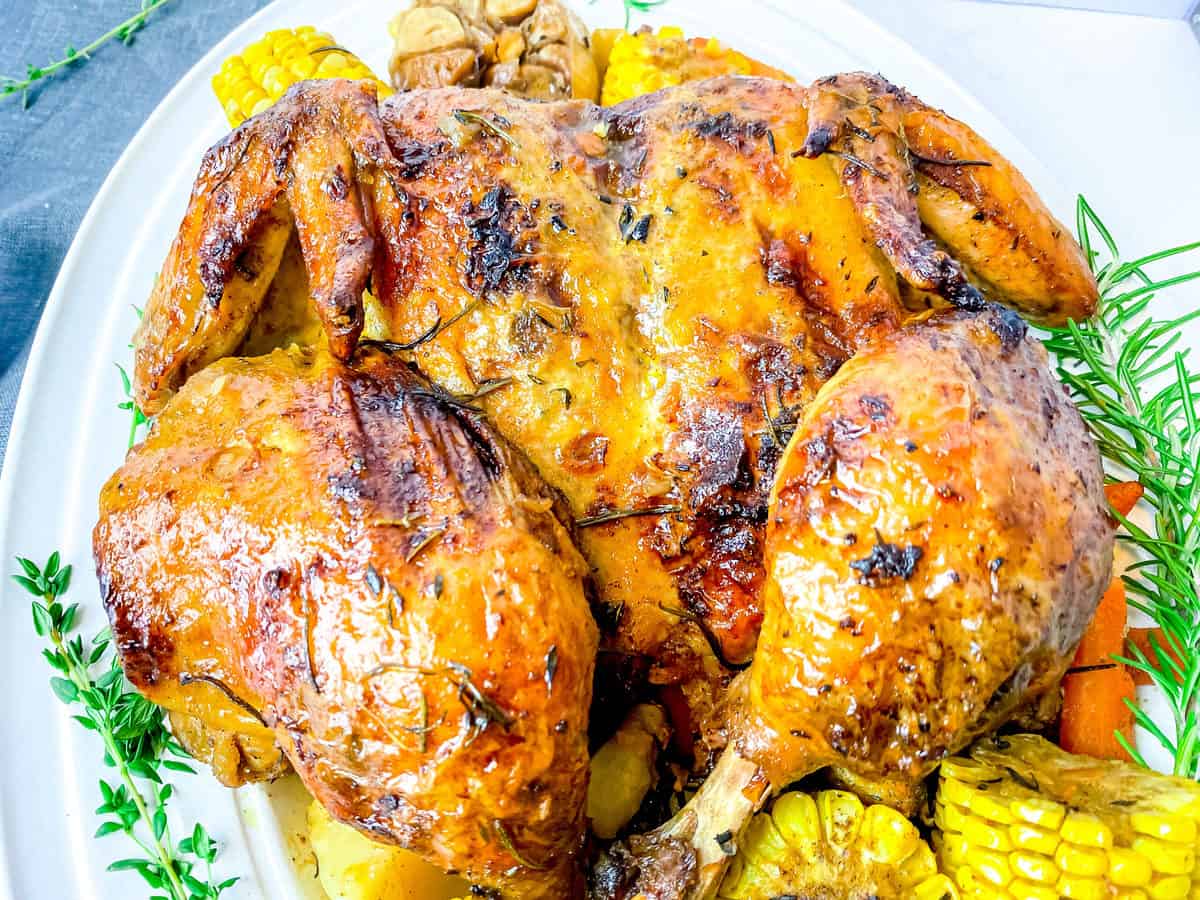
Can I Use Dry Herbs To Roast Chicken?
You sure can. Fresh herbs are more flavorful than dry herbs, but you can use the dry variety in a pinch. It will require some tweaking in doing so. Dried herbs are often more potent and concentrated than fresh herbs so you will need less. That means the ratio of one tablespoon of fresh herbs to one teaspoon of dried herbs.
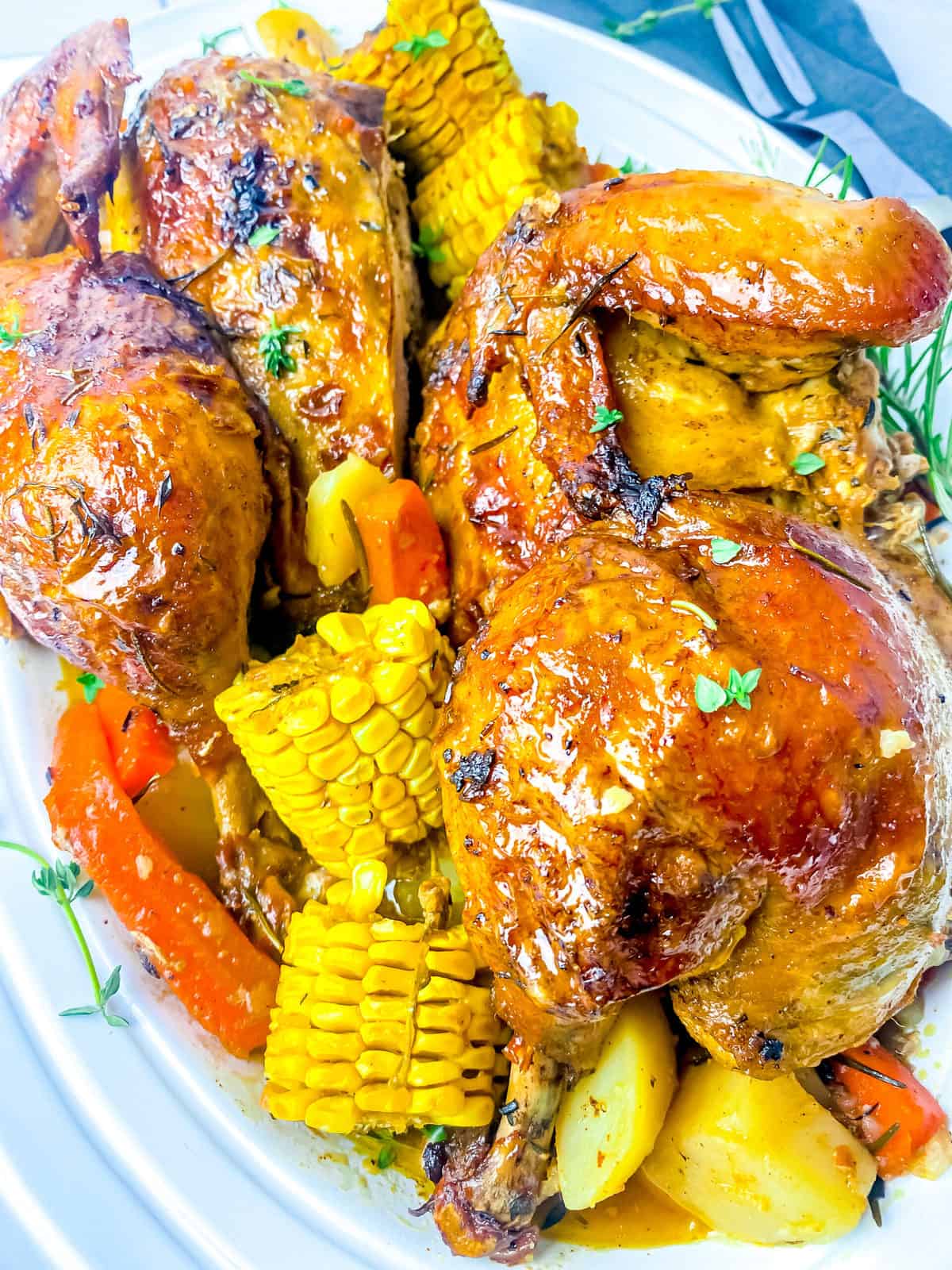
Food Pairings
What Goes Well With Roasted Chicken?
This roasted chicken can easily be paired with your favorite side dish for an unforgettable meal at home. You can pair it with creamy mashed potatoes, rice, salad, or even more vegetables.
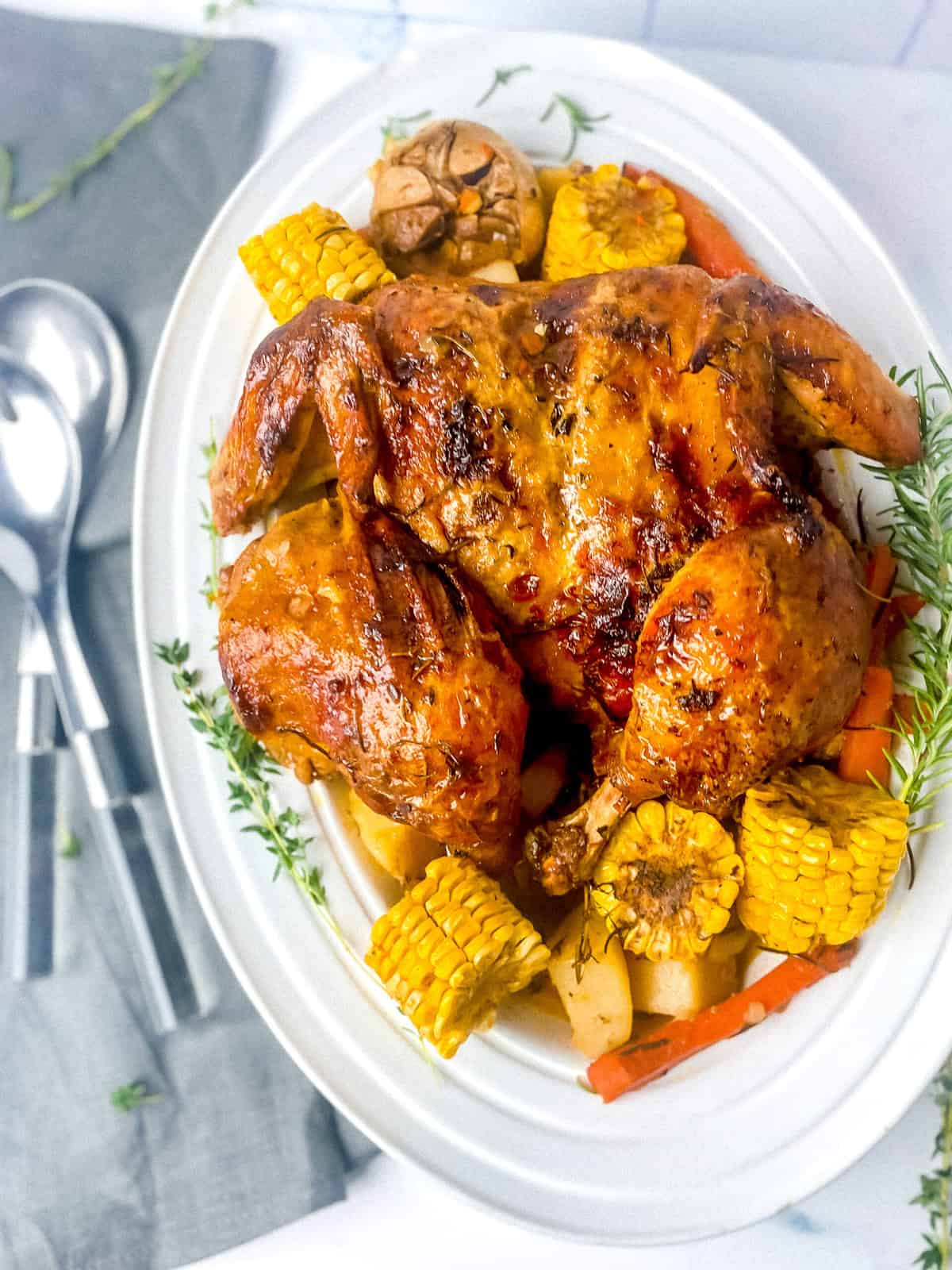
Got Leftovers?
How To Store Leftover Roasted Chicken In The Fridge?
You can store your leftover roasted chicken in the fridge for 3-4 days.
How To Store Leftover Roasted Chicken In The Freezer?
Store your leftovers covered in airtight containers or heavy-duty freezer bags, or wrap tightly with heavy-duty aluminum foil or freezer wrap.

How Long Does Fried Chicken Last In The Freezer?
Properly stored, it will maintain the best quality for about 4 months but will remain safe beyond that time.
Leftovers can be kept for 3-4 days in the refrigerator. After that, the risk of food poisoning increases. If you don’t think you’ll be able to eat leftovers within four days, freeze them immediately.
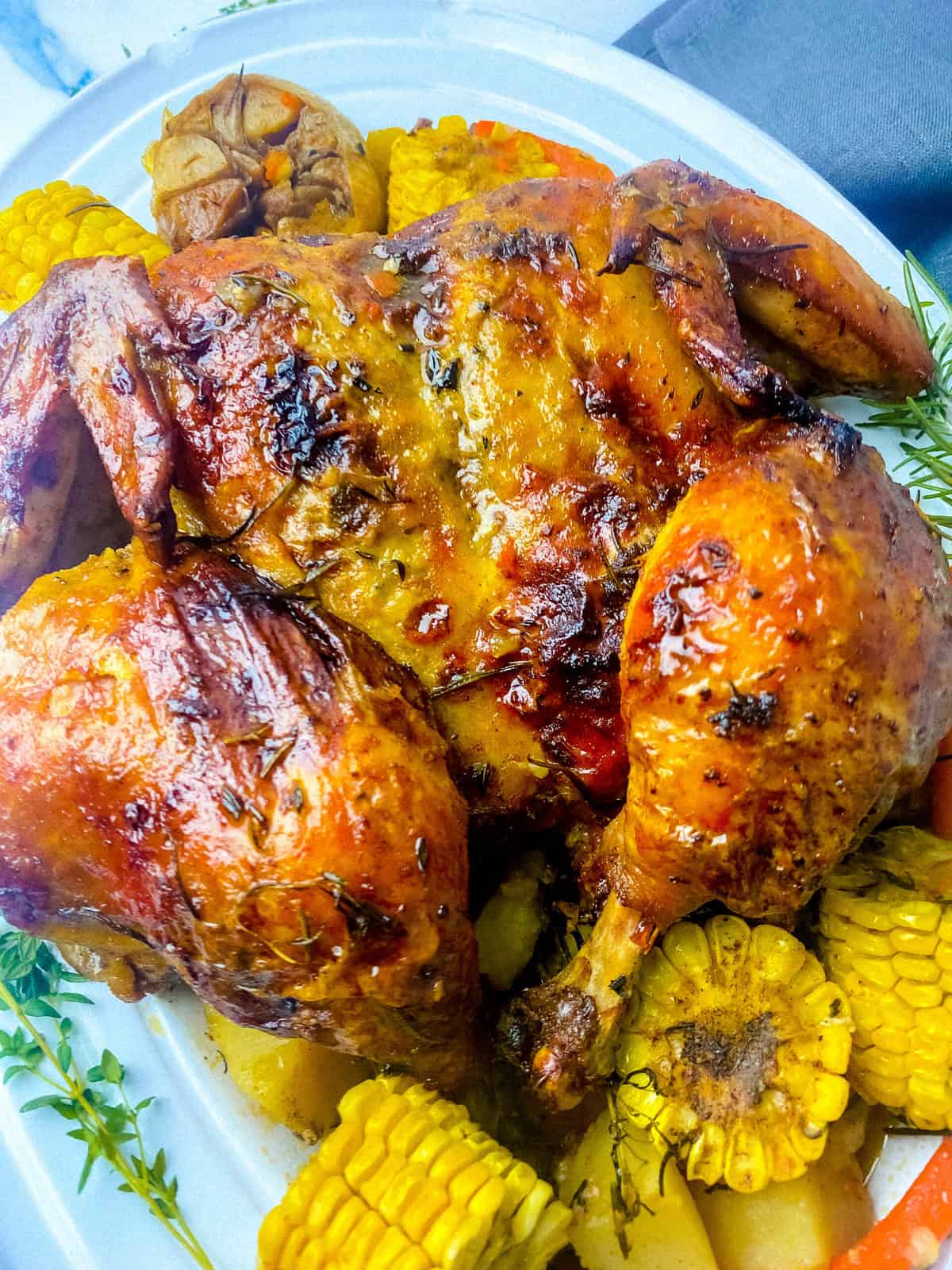
Need To Reheat?
How To Reheat Leftover Roasted Chicken On The Stove Top
- Empty the roasted chicken into a skillet over low heat and allow the food to heat all the way thru slowly.
- Turn pieces occasionally to ensure it heats all the way through. The does take some patience to re-heat this way, but of course, you can use the microwave. (see microwave instructions below)

How To Reheat Leftover Roasted Chicken In The Microwave?
The microwave is quick and convenient but it is not the best method for reheating your leftover chicken, it’s most likely to yield a rubbery or chalk-dry piece of chicken. yuck! If you must microwave the bird, follow these steps for the best results:
- Place a damp paper towel over the plate to add moisture and prevent the chicken from drying out too much.
- Reheat for about 4-5 minutes until your meal has heated all the way through.
- The actual time varies depending on your microwave.

How To Reheat Leftover Roasted Chicken In The Oven?
- Set the oven to 350°F and remove the chicken from the fridge. While you wait for the oven to come to temperature, take the chill off your bird by letting it rest at room temperature on the counter.
- Place chicken in an oven-safe dish.
- To keep the chicken moist, pour a cup of chicken broth into the bottom of the dish (or pan juice). Cover the dish with foil and place it in the oven.
- Let the chicken roast for approximately 25 minutes.
- Remove the foil and let roast for an additional 5 minutes to crisp up the skin.
- Remove chicken from the oven and enjoy.
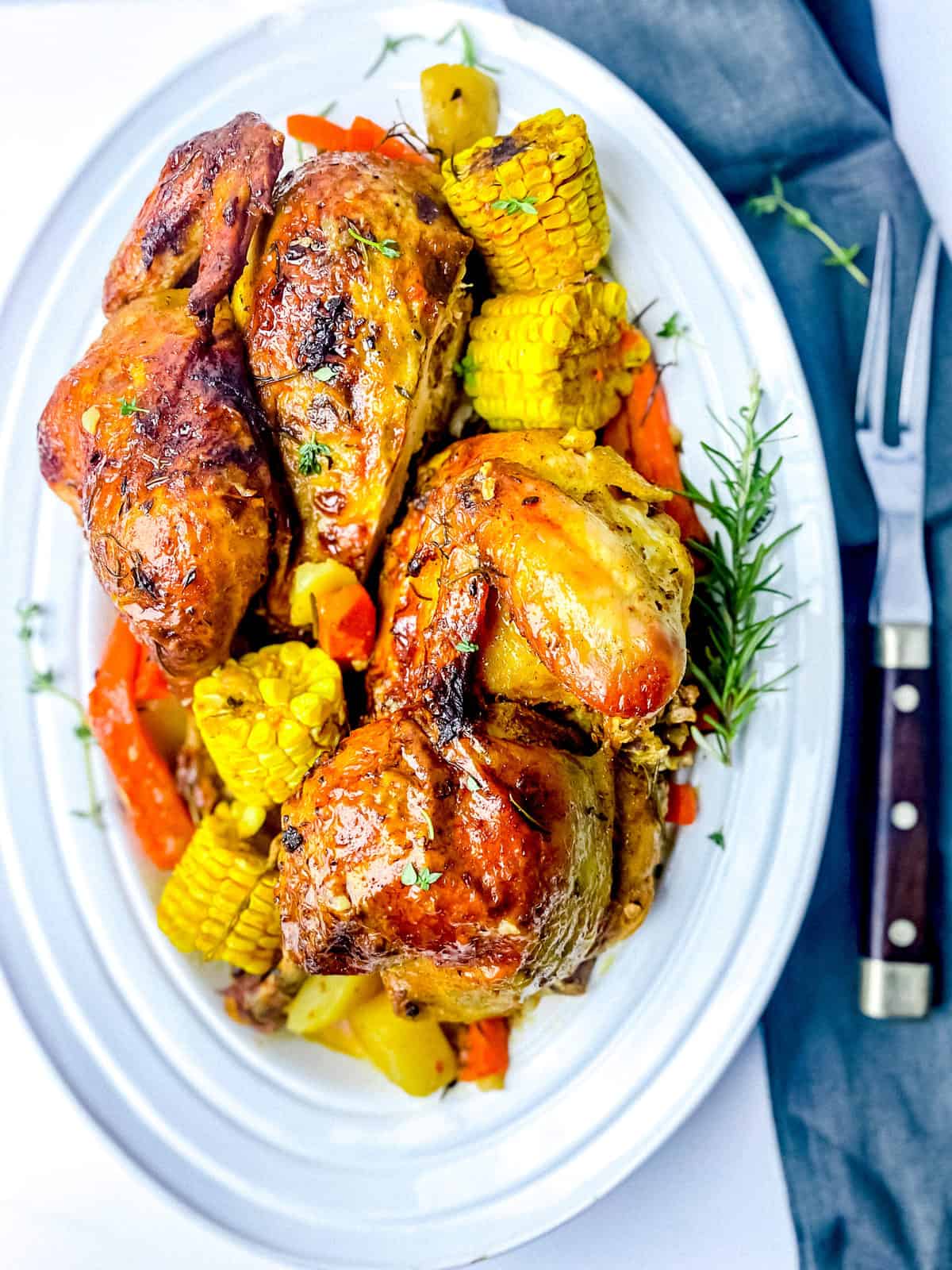
How To Reheat Leftover Roasted Chicken In The Air Fryer?
For an extra-crispy chicken skin, try reheating your chicken in the air fryer. This is the best way to help restore your roasted chicken to its heated first-cooked glory. Plus, it couldn’t be easier.
Turn your air fryer to 350°F.
Remove the chicken from the fridge and place it in the air fryer.
Set for 3-4 minutes until your leftover chicken is crisp and heated through.
Remove chicken from the air fryer and enjoy.
Kraving More?
Check out my other krave worthy Chicken and Poultry Recipes or explore The Recipe Index for even MORE KRAVE-WORTHY EATS.

Key Equipment/Products Used
 Buy Now →
Buy Now →  Buy Now →
Buy Now →  Buy Now →
Buy Now → Nutrition Information
Nutrition Facts
4 servings per container
Calories1199.3
- Amount Per Serving% Daily Value *
- Total Fat
77.49g
119%
- Sodium 3884.58mg 162%
- Amount Per Serving% Daily Value *
- Total Carbohydrate
27.97g
9%
- Dietary Fiber 3.92g 12%
- Sugars 3.5g
- Protein 85.61g 170%
* The % Daily Value tells you how much a nutrient in a serving of food contributes to a daily diet. 2,000 calories a day is used for general nutrition advice.
Nutritional Disclaimer
kerriannskravings.com occasionally offers nutritional information for recipes contained on this site. This information is provided as a courtesy and is an estimate only. To obtain the most accurate representation of the nutritional information in any given recipe, you should calculate the nutritional information with the actual ingredients used in your recipe. For more information read our Nutritional Disclaimer.

